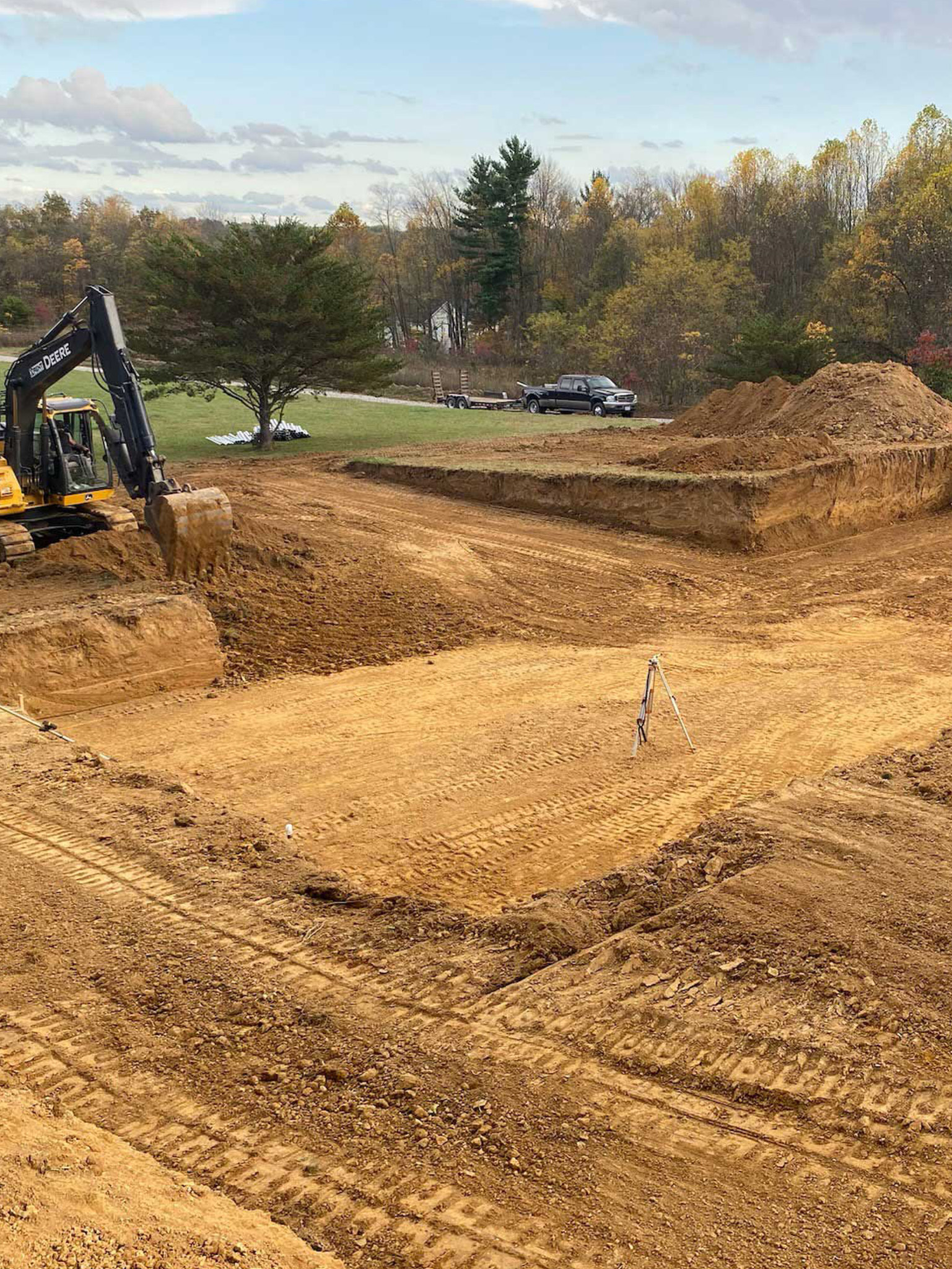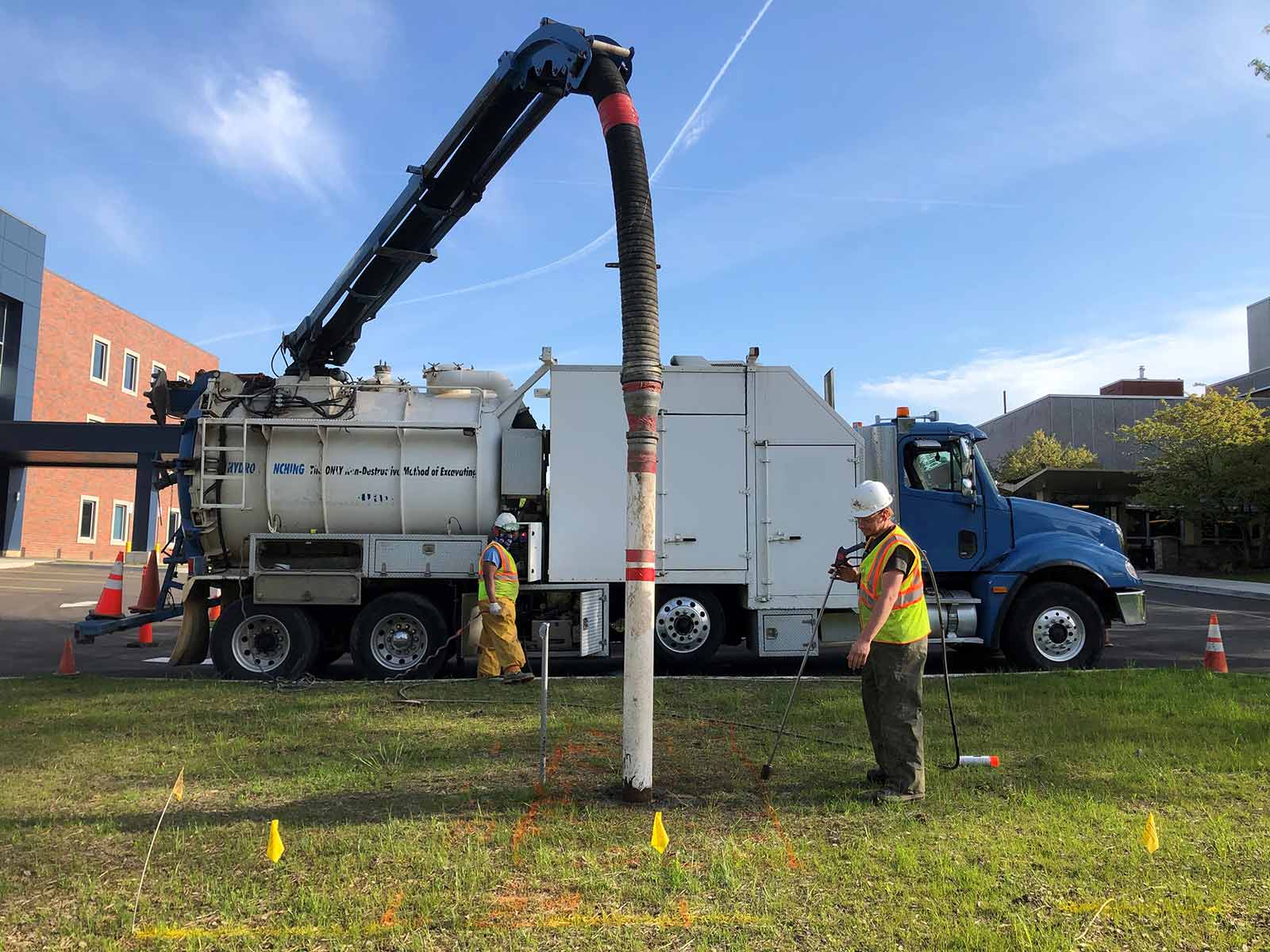Lancaster Trenching - Expert Trenching Solutions in Lancaster, Ohio
Lancaster Trenching - Expert Trenching Solutions in Lancaster, Ohio
Blog Article
Unveiling the Art of Excavation: Pro Tips for Safe and Effective Excavating
In the realm of excavation, the mastery of secure and effective excavating is an art kind that needs understanding, accuracy, and adherence to established methods. As soil is transformed and planet is relocated, the ins and outs of excavation disclose themselves, requiring a keen understanding of devices, dirt structure, security procedures, and ecological factors to consider. The competence required to browse these elements efficiently can suggest the difference in between a successful excavation project and a possible catastrophe. By unraveling the layers of this detailed process, a world of understandings and methods waits for those seeking to boost their excavation abilities to new elevations.
Value of Appropriate Equipment
To ensure the security and performance of any kind of excavation project, using the ideal tools is vital. The right devices not just improve efficiency but likewise mitigate dangers related to digging. Excavation tasks vary in extent and complexity, ranging from little domestic landscaping jobs to large-scale building and construction undertakings. Despite the project dimension, having the right equipment can make a substantial difference in the outcome.
Excavators are essential items of machinery in any type of digging procedure. These functional makers been available in numerous sizes to fit various task requirements. Tiny excavators are ideal for smaller sized tasks, while bigger excavators deal with more extensive tasks successfully. Backhoes are another vital equipment kind, integrating the features of a loader and an excavator in one device. They are beneficial for jobs requiring adaptability and ability to move.
Bulldozers excel in jobs that require pushing big amounts of dirt or particles. By spending in the suitable tools, excavation tasks can be finished securely, on time, and with precision.
Understanding Soil Make-up
A thorough grasp of soil structure is basic for executing excavation projects with precision and security. Comprehending the various types of dirt is vital as it straight influences excavation methods, equipment selection, and overall project effectiveness. Soil composition normally is composed of 4 main parts: sand, silt, clay, and natural matter. Each part has special residential properties that influence just how soil responds to excavation processes.
Silt bits are smaller than sand but larger than clay, using moderate drain and cohesion. Organic matter, such as rotting plant product, impacts soil fertility and security.
Prior to commencing excavation, performing dirt tests to determine its structure and attributes is essential. This info helps in choosing the ideal equipment, implementing precaution, and developing excavation approaches tailored to the specific dirt conditions - dump truck companies in ohio. By understanding dirt structure, excavation experts can enhance project end results while guaranteeing safety and security and adherence to ideal practices
Precaution and Protocols
Recognizing soil investigate this site structure is the cornerstone upon which precaution and procedures for excavation tasks are developed, ensuring the health of employees and the success of the endeavor. When it comes to safety and security during excavation, there are several key measures that should be carried out to alleviate dangers and avoid crashes.
Most importantly, before any kind of excavating starts, a detailed evaluation of the website should be conducted to recognize any kind of prospective threats such as below ground energies, unsteady soil conditions, or close-by structures that can posture a danger. It is vital to have a proficient individual manage the excavation process to make sure that all security procedures are complied with strictly.
Moreover, all workers involved in the excavation needs to be correctly trained in secure excavating methods and the appropriate procedure of tools. By sticking to these safety steps and procedures, excavation jobs can be completed successfully and without case.
Efficient Excavation Preparation
When embarking on an excavation project, meticulous planning is essential to make sure performance, security, and successful end results. Effective excavation planning involves numerous crucial steps that are essential for the smooth execution of the project.
As soon as the website analysis is full, the next action is to create a clear timeline and timetable for the excavation activities. This consists of figuring out the series of jobs, devices requirements, and manpower allocation. Proper scheduling aids avoid hold-ups and guarantees that the project remains on track.

Moreover, communication among all employee is extremely important throughout the preparation phase. Clear instructions, regular updates, and effective sychronisation are essential for an effective excavation project. By investing effort and time in careful planning, excavation groups can dramatically enhance performance, minimize check that risks, and achieve effective outcomes.

Taking Care Of Environmental Factors To Consider
With increasing focus on ecological sustainability in construction methods, managing ecological considerations has become a vital facet of excavation jobs. Excavation tasks have the potential to influence the surrounding atmosphere with soil disintegration, sediment overflow, habitat disruption, and contamination of water sources. To mitigate these dangers, it is vital to execute best practices that focus on ecological protection.

Moreover, proper waste monitoring is important to avoid soil and water contamination. Carrying out procedures for the disposal of harmful materials, recycling of waste products, and lessening making use of hazardous chemicals can substantially lower the ecological impact of excavation tasks. By integrating these methods right into excavation planning and execution, building companies can ensure that their jobs are not only safe and effective but also eco responsible.
Conclusion
In conclusion, grasping the art of excavation needs an extensive understanding of proper tools, soil structure, precaution, and efficient preparation. By complying with these guidelines and considering ecological elements, excavations can be performed safely and successfully. It is crucial to prioritize safety and performance in every excavating job to ensure successful results.
As dirt is turned and planet is moved, the intricacies of excavation expose themselves, requiring a keen understanding of equipment, dirt structure, safety and security methods, and ecological considerations.To make certain the security and effectiveness of any kind of excavation project, using the appropriate tools is extremely important.A comprehensive grasp of soil composition is basic for executing excavation projects with precision and safety. Comprehending the different kinds of soil is vital as it directly affects excavation methods, tools selection, and overall job efficiency. By comprehending soil make-up, excavation experts can improve task outcomes while ensuring safety and security and adherence to ideal methods.
Report this page